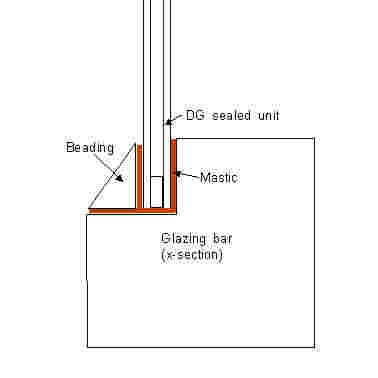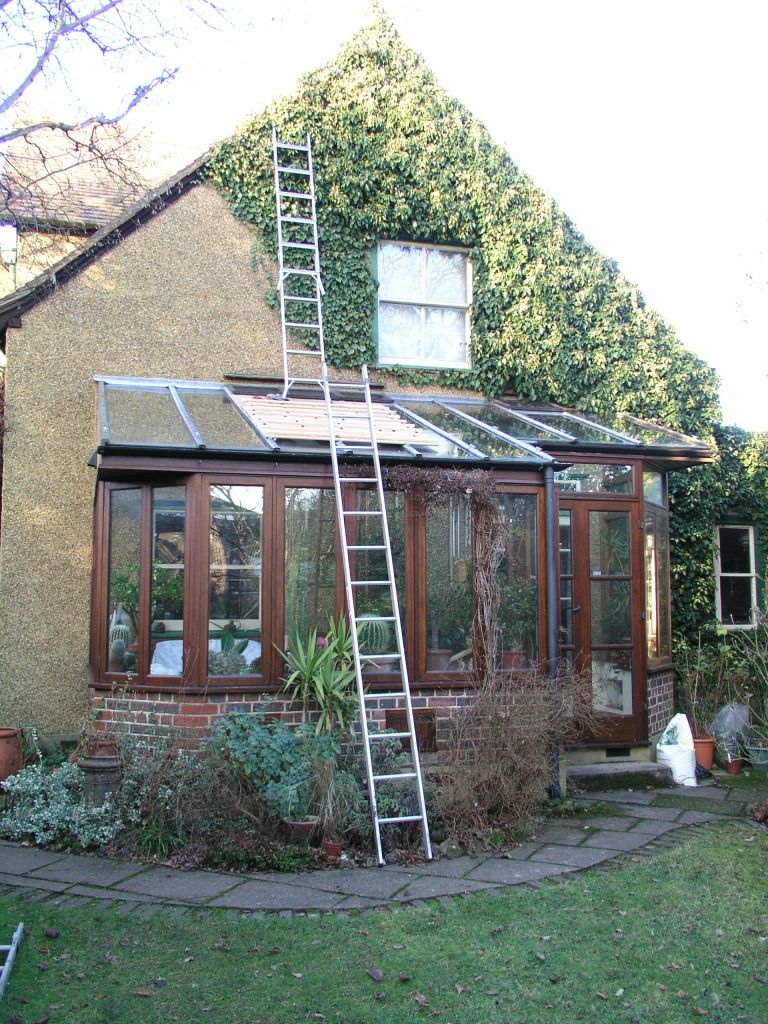Penners
Member
- Messages
- 17,294
- Location
- Suffolk, England
Our conservatory (added to the house by the previous owners) has a failed double-glazing sealed unit, which I am in the process of replacing. I have bought the new DG sealed unit and I'm in the process of taking out the old one.
I've never dealt with DG units before, or with glazing that isn't done with putty. In this case the glazing unit is held in with a wooden beading, which was extremely difficult to remove. I ended up sharpening the edge of a filler knife and sliding under both faces of the wooden beading all the way around the window, then prising the beading off, along with its pins.
The beading was held firmly in place by a brown mastic, as was the DG unit in the rebate in the glazing bar. The drawing below shows where the mastic (in brown) was applied. Either this mastic was applied with incredible skill and accuracy or it's some kind of glazier's mastic "tape". There's no hint of any wandering of its coverage, and it stops exactly at the edge of the beading externally and the glazing rebate internally.
Now (at last!) to my question. Has anyone any experience of doing this kind of glazing? If so, can you tell me what the glazier might have used? If it is a tape, I presume I can buy this from a glass supplier, and it would make life a great deal easier than having to clean up the mess that I know I'll make if I use a mastic gun.
All advice welcome - thanks!

I've never dealt with DG units before, or with glazing that isn't done with putty. In this case the glazing unit is held in with a wooden beading, which was extremely difficult to remove. I ended up sharpening the edge of a filler knife and sliding under both faces of the wooden beading all the way around the window, then prising the beading off, along with its pins.
The beading was held firmly in place by a brown mastic, as was the DG unit in the rebate in the glazing bar. The drawing below shows where the mastic (in brown) was applied. Either this mastic was applied with incredible skill and accuracy or it's some kind of glazier's mastic "tape". There's no hint of any wandering of its coverage, and it stops exactly at the edge of the beading externally and the glazing rebate internally.
Now (at last!) to my question. Has anyone any experience of doing this kind of glazing? If so, can you tell me what the glazier might have used? If it is a tape, I presume I can buy this from a glass supplier, and it would make life a great deal easier than having to clean up the mess that I know I'll make if I use a mastic gun.
All advice welcome - thanks!


